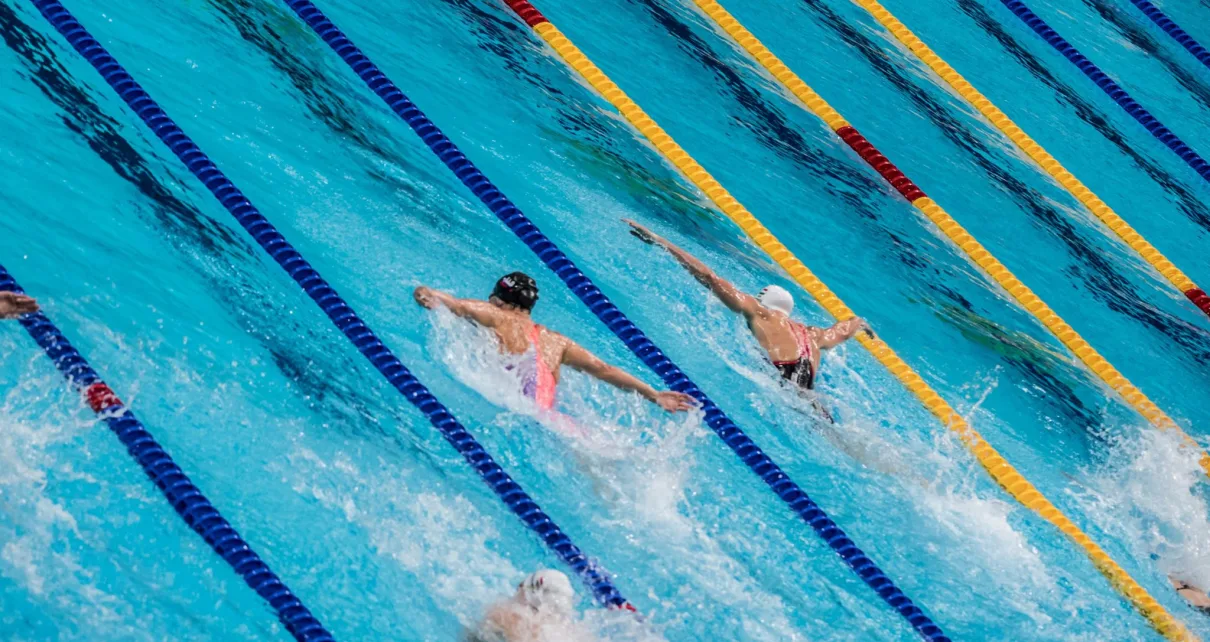UNBELIEVABLE DISCOUNTS AT AMAZON.COM ||
Courtesy: Zachary Kropp
Butterfrog is the archaic form of butterfly that was swam throughout much of the 1930s and 1940s. Technically, Butterfrog is simply a butterfly pull with a breaststroke kick. While you rarely see this stroke outside of specific aquatic situations, I believe it is still relevant for any contemporary swimmer.
The stroke of the butterfly evolved out of experimentation with breaststroke. Originally, butterfly was simply breaststroke with an above-water arm recovery. In fact, Butterfly wasn’t an official stroke for World Aquatics until 1952. This early form of butterfly has been affectionately named butterfrog. In the late 1930s, swimmers started experimenting with a dolphin kick instead of the frog kick. This evolution made butterfrog turn into butterfly.
Butterfly today is taught with the dolphin kick, but the old butterfrog style still has its place. It is currently allowed in US Masters Swimming meets. On page 3 of the US Masters Rulebook, it states “The breaststroke kick may be used exclusively or interchangeably with the dolphin kick while doing the butterfly stroke at any time during the race. Only one breaststroke kick is permitted per arm pull, except that a single breaststroke kick is permitted prior to the turn and the finish without an arm pull. After the start and after each turn, a single breaststroke kick is permitted prior to the first arm pull.” US Masters Swimming is the only current organization that allows the use of butterfrog.
This old form of butterfly has many reasons to be kept alive. Here are a few:
1. It is a less exhausting form of butterfly. An athlete will be able to keep doing butterfrog for longer intervals than with butterfly. This may be helpful for older athletes as well as new swimmers.
The stroke would be the most effective method for getting young beginners to compete in butterfly. It would allow them to grasp the technical side of the technique while avoiding the issues of exhaustion. I would rather a swimmer race butterfrog with good timing and technique than swim a poor butterfly.
2. It can be a helpful learning aid for butterfly and breaststroke. Both of these strokes require an undulating motion and correct timing. Butterflyers and breaststrokers will both benefit from working with the timing and the undulation.
This stroke is also helpful for getting breaststrokers to work on their glide after a stroke.
3. It is a unique artifact of swimming history. I am a history teacher, which means that I believe everything old is worth preserving.
For athletes that can manage a more intensive workout, butterfrog is probably not suited for their needs, but athletes that would still like to engage with butterfly in a less intensive manner may find use in the butterfrog stroke. Butterfrog should not be used in competitions for athletes who are capable of swimming dolphin kick butterfly; however, it is a perfect competition stroke for those that are older in age or new to the sport.
Here’s a how-to video courtesy of the Champions Mojo Podcast YouTube channel:

 ABOUT ZACHARY KROPP
ABOUT ZACHARY KROPP
Zachary Kropp is an educator and swimmer from Southgate, Michigan! He has been involved with swimming since he was about 10 years old! He is currently coaching recreational and school teams in the southeastern part of Michigan.




